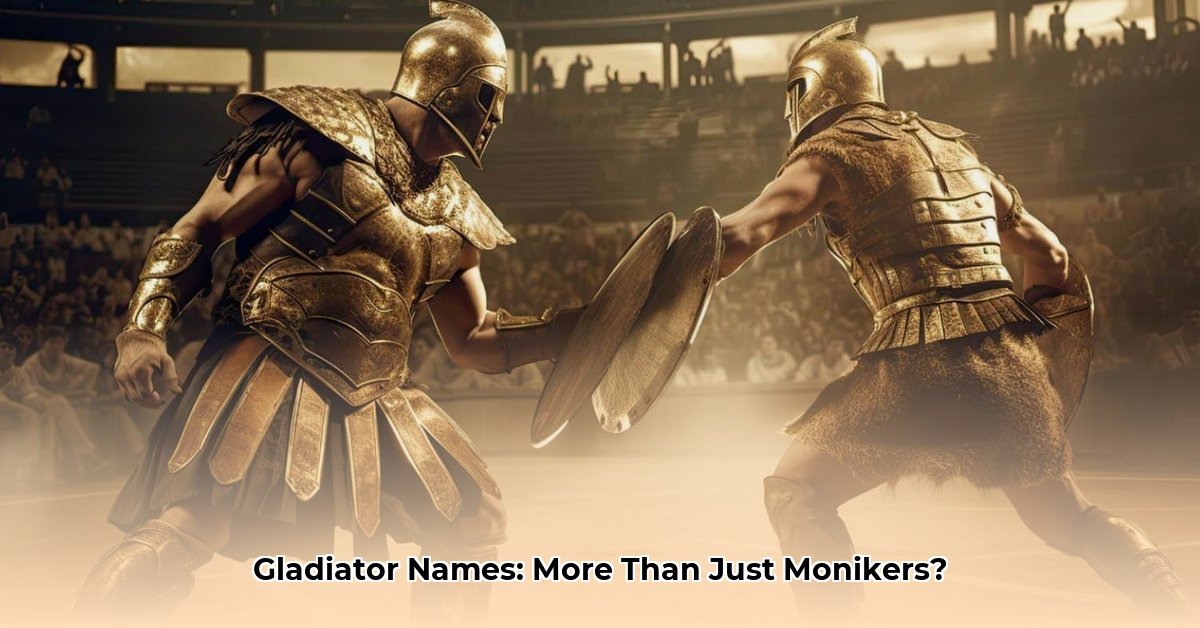Ever wondered about the brave souls who stepped into the Colosseum’s sands? Gladiatorial combat was far more than a mere display of brute force; it was a complex spectacle featuring diverse characters, each with a unique fighting style, specialized equipment, and often, a compelling personal narrative. From the heavily armored warrior clashing with the agile net-fighter to revered champions making decisions that defied all expectations, their stories transcend the violence, offering profound insights into Roman society, its values, and the indomitable human spirit under extreme pressure. We delve into the lives of iconic figures, including a rebel who challenged the very fabric of the Roman Empire and an emperor who debased the noble art of combat for personal vanity. You can learn more about a gladiator helmet here.
The Gladiatorial Arena: A World Defined by Combat and Spectacle
The origins of gladiatorial games trace back to the early days of the Roman Republic, around the 3rd century BCE. Initially, these spectacles developed from Etruscan or Campanian funeral rites, where blood offerings were made to honor the deceased. However, as Rome expanded its vast territories, the games evolved, transforming into a formidable tool for political propaganda and public entertainment. By the 1st century BCE, gladiatorial contests had become a main feature of Roman culture, reaching their zenith with the inauguration of the Flavian Amphitheatre, famously known as the Colosseum, in 80 CE under Emperor Titus. Capable of seating around 50,000 spectators, this architectural marvel became the quintessential venue for violent entertainment, hosting everything from animal hunts and executions to, most famously, gladiator battles.
Who were these captivating, often tragic, figures? Gladiators were typically slaves, prisoners of war, or condemned criminals, forced into this perilous life. Yet, a surprising number of free individuals, driven by the allure of fame, fortune, or perhaps a desperate need to clear debts, voluntarily signed away their rights to enter the ludi, the special schools where gladiators trained. Life in these schools was rigorous and brutal, yet it also offered consistent provisions, medical care, and a unique sense of camaraderie among those who shared such an extreme existence. Despite the harsh realities and the high risk of a short life, successful gladiators could become popular heroes, win substantial wealth, and in rare cases, even earn the coveted rudis, a wooden sword signifying their freedom.
Beyond Brute Force: Understanding Diverse Gladiator Roles
Gladiatorial contests were highly organized events featuring a sophisticated array of combatant types, each defined by unique weaponry, tactical approaches, and a specific role within the Roman consciousness. Understanding these distinctions reveals not just the variety of the spectacle but also the strategic thought behind the matchups and the evolving cultural attitudes towards the games.
Murmillo: The Roman Heavy Infantryman
Imagine a formidable figure, a living embodiment of Roman military might, entering the arena. This was the Murmillo, a gladiator whose very appearance mirrored the heavily armed Roman legionary. His distinctive helmet, often adorned with a fish-shaped crest, likely earned him the informal nickname “fish-man.” Equipped for powerful engagement, the Murmillo wielded a short sword (gladius), protected himself with a massive rectangular shield (scutum), and wore arm protection (manica) and leg guards (greaves). His fighting style emphasized direct confrontation and overwhelming force. Like a tank on the battlefield, the Murmillo would advance, utilizing his large shield for defense while delivering precise, powerful blows with his gladius. This gladiator frequently faced the agile Retiarius, creating a captivating contrast of power versus nimble evasion. The Murmillo was not merely a fighter; he symbolized Rome’s unwavering strength and strategic dominance in the eyes of the roaring crowds.
Retiarius: The Agile Net-Fighter
Now, consider the stark opposite of the Murmillo: the Retiarius, or “net fighter.” This gladiator eschewed heavy armor, relying instead on speed, agility, and cunning. His arsenal was unique: a large net (rete) for ensnaring opponents, a sharp trident (fuscina) for striking, and a small shoulder shield (galerus) for minimal defense. He often carried a dagger for close-quarters combat. The Retiarius’s approach was a ballet of evasion and tactical strikes. He would skillfully cast his net to entangle his opponent, then follow with swift, decisive thrusts of his trident. This fighter proved that victory did not solely depend on brute strength; intellectual agility and precise execution could overcome heavily armed adversaries. The daring and fluid movements of the Retiarius captivated audiences, offering a thrilling display that challenged conventional notions of gladiatorial prowess.
Secutor: The Net-Hunter’s Foe
Born from the need to counter the unique style of the Retiarius, the Secutor was a specialized gladiator whose helmet featured a smooth, rounded design with only small eyeholes, specifically engineered to prevent entanglement by a net. Armed similarly to the Murmillo with a gladius and scutum, the Secutor’s primary purpose was to relentlessly pursue the elusive Retiarius, thereby nullifying the net-fighter’s advantage of disengagement and creating a more forced, direct combat scenario. This pairing—Secutor versus Retiarius—became one of the most iconic and highly anticipated matchups in the arena, a true clash of opposing philosophies: the heavy, relentless pursuer against the light, agile evader.
Thraex: The Agile Swordsman
Another common type was the Thraex (Thracian), a lightly armored gladiator who fought with a small, round shield (parmula) and a curved sword (sica). Their fighting style emphasized quick, darting movements and slashing attacks, often targeting their opponents’ limbs. Their distinctive helmet often featured a griffin’s head.
Other Specialized Types and Their Roles
The Roman arena was a melting pot of fighting styles, each designed for maximum spectacle:
* Hoplomachus: Heavily armored, armed with a spear and a small, round shield, reminiscent of Greek hoplites.
* Dimachaerus: A unique and rare gladiator who fought with two swords, one in each hand, demanding exceptional agility and coordination.
* Provocator: Heavily armored with a short sword and a large rectangular shield, often matched against other provocators in highly formal duels.
* Bestiarius: Not primarily gladiators in the typical sense, these fighters specialized in combating wild animals, armed often only with a spear or a net. Their battles were known as venationes.
* Andabatae: A bizarre and likely rare type of gladiator who fought blindfolded, often on horseback, turning combat into a chaotic, unpredictable spectacle.
Gladiatrices: Women in the Arena
And what of women in the arena? Gladiatrices did exist, although historical evidence suggests their prevalence was debated, and they might have been considered rare novelties rather than common participants. Emperor Septimius Severus famously banned them from public combat in 200 CE, indicating their presence, however sporadic, in the arenas. When they did fight, it was often with lighter armor or against animals, challenging societal norms and providing a unique spectacle.
Legends Forged in Sand: Unforgettable Gladiatorial Lives
Beyond the general types, individual gladiators often achieved legendary status, their feats echoing through history. Some were rebels, others champions, and a few, even emperors.
Spartacus: The Rebel Who Shook Rome
Among the most famous, Spartacus, a Thracian by birth, carved a legend far greater than any single bout. Trained in the gladiatorial school of Lentulus Batiatus in Capua, he ignited a spark of rebellion in 73 BCE. Leading approximately 70 fellow gladiators, what began as a desperate escape quickly escalated into the Third Servile War, a colossal slave uprising that sent shockwaves throughout the Roman Republic.
Spartacus’s army, swelled by escaped slaves, dispossessed farmers, and disillusioned Roman citizens, repeatedly defeated Roman legions, instilling genuine fear in Rome’s ruling elite. He possessed an uncanny ability to inspire and rally disparate groups, transforming outlaws into a disciplined, formidable army. What made his army so remarkably effective against the renowned legions of Rome? Spartacus, drawing upon military and gladiatorial experience, instilled discipline and developed innovative, effective tactics.
Despite his strategic brilliance and early triumphs, the overwhelming might of the Roman Republic proved too great to overcome. Marcus Licinius Crassus and Gnaeus Pompeius Magnus, two of the Republic’s most formidable military and political figures, brought their legions to bear. Spartacus himself was killed in the final desperate battle in 71 BCE, his brave army decisively defeated. In a brutal display of Roman power and a stark warning against future rebellions, thousands of captured rebels were crucified along the Appian Way, a grim testament to the price of defiance.
Why does the story of Spartacus continue to resonate so profoundly through the centuries? His revolt has evolved beyond a mere historical event to become an iconic, potent symbol of resistance against tyranny and oppression, inspiring revolutionary movements across the globe. While ancient historical sources might primarily emphasize his personal quest for liberation, his modern interpretation has been profoundly shaped by social and political movements, transforming him into a universal champion for freedom and social justice.
Learn More
Flamma: The Enigma Who Rejected Freedom
Among the many compelling stories of individual gladiators, that of Flamma stands out as truly enigmatic. This Syrian gladiator, a secutor, participated in an astonishing 34 fights during the reign of Hadrian (117-138 CE), securing 21 victories, 9 draws, and only 4 losses. He survived 13 of those encounters where he could have been killed. What makes his story truly remarkable is his repeated refusal of freedom. Flamma was offered the rudis, the wooden sword symbolizing emancipation, an incredible four times, yet each time, he chose to remain within the brutal confines of the arena.
Why would a skilled fighter, presented with the ultimate prize of liberty, repeatedly decline it? Historians speculate on complex motivations:
* A Troubled Past: It’s plausible that Flamma, as a Syrian, was a displaced person or even a former soldier or prisoner whose homeland was devastated by conflict (e.g., the Bar Kokhba revolt). For someone whose life outside was chaotic or dishonorable, the structured, albeit brutal, life within the arena could have offered a perceived stability and purpose that










